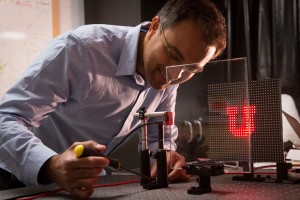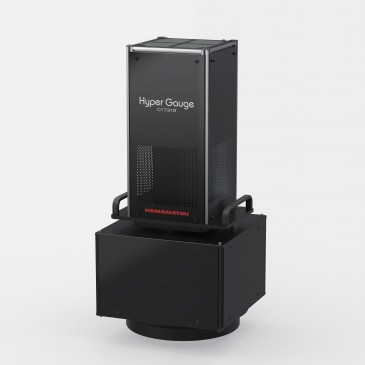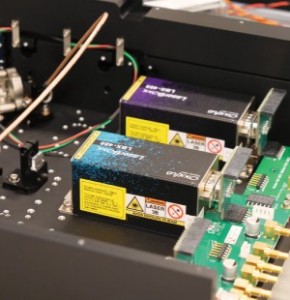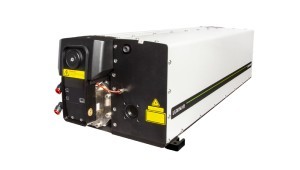
Engineers at The University of Utah (US) have created an optics-less camera that can use a regular pane of glass or any see-through window as the lens.
“We showed that by placing an image sensor — with no optics — at the edge of a transparent window, facing into the window, it is possible to reconstruct the details of an object or scene sitting outside the window,” reports Rajesh Menon, associate professor of electrical and computer engineering at The University of Utah. “In other words, we showed a ‘transparent lensless camera,’ where the camera itself does not obstruct the view of the object or scene being recorded.”
Implementation of a non-anthropomorphic camera
Speaking about fundamentally new and unique aspects of this camera, Menon points out that cameras have been designed for over 100 years based on human perception, and the optics-less device his team has developed is simply a specific implementation of what he refers to as “non-anthropomorphic cameras.”
“It is arguably true that more images and videos are seen by machines today rather than by humans. This will inevitably be true in the future,” the professor says. “Therefore, we are just raising the question: What if we start designing cameras for machines, rather than for humans? Our paper is one small step in that direction.”
Menon explains that most previous lensless cameras either face the scene or object to be captured — thereby obstructing the view — or they use some device (like a mask or a grating) to manipulate the light entering the device. In this new lensless camera, the sensor is simply placed facing the edge of a window.
Key findings
Menon says the most important outcome of these experiments is to realize and successfully demonstrate that this camera configuration is even possible. “In other words, we know that the information regarding the scene or object enters the window, because we as humans can perceive this,” he explains. The study’s key finding is that even a very small fraction of this information is sufficient for a machine to perceive the object or scene, and that this visual image capture can be achieved with an absolutely non-traditional camera. “In other words, the raw images recorded by the image sensor do not make any sense to a human, but a properly trained machine can easily understand them,” Menon elaborates, adding that the other surprising finding was that the machines can even perceive color and video images using this technique.
In fact, Menon himself was “definitely surprised” at how well the optics-less camera worked. “However, we should keep the caveat that our initial experiments only tried to image very simple objects.”
Rather than setting out to solve a specific problem, the researchers were driven by the spirit of inquiry when they embarked on this project. “We were curious to see if a machine could perceive the information from a scene without a traditional lens-based camera,” Menon remembers. “However, we can make imaging systems integrate in a more seamless manner with the environment — think about the windshield of a car or the glasses that one wears serving as the aperture of a camera.”
Moreover, such cameras would be lightweight and considerably simpler as they require no lens. Menon can even imagine that such a technology has the potential to solve privacy issues. How? Simply due to the fact that the images are not perceivable by humans. Private images can still be used as data; however, human eyes would not be able to “see” the images directly.
Key applications and impact on future camera designs
The expert finds it difficult, at this point, to predict the potential impact his team’s research advance could have on the design of future cameras. “In practice, we want inventors to think about the idea of cameras optimized for machines, rather than for humans,” he emphasizes, mentioning highly specific cameras as an example, such as cameras that only recognize traffic signs. Designs of this new kind of lensless camera could aim to fulfill goals of reducing power consumption, weight, cost or any other parameter important to a specific application, according to the inventor. “Our approach can also enable designers to consider integrating imaging systems into objects that would otherwise not be considered: windshield of a car, windows in a house, glasses on your nose, etc.”
Potentially important applications for this new kind of lensless camera could include driver assistance for automobiles or eye-tracking in augmented-reality glasses. Otherwise, Menon says, “I think our imaginations and physics are the main limitations in the future.”
Next steps
“We have already improved implementations of various machine-learning algorithms to use such cameras for image classification,” Menon reports, adding that the camera he and his colleagues have developed can distinguish between a cat and a dog. “We are also very interested in understanding the fundamental limitations of the information captured by such cameras. For instance, could we get a full 3D image of a scene?” the scientist wonders. “There are many exciting areas of research that lie at this intersection of computer science and optics.”
The research is detailed in the paper "Computational Imaging Enables a 'See-Through' Lensless Camera," published in Optics Express.
Written by Sandra Henderson, research editor Novus Light Technologies Today























 Back to Features
Back to Features



























